Today’s book review is about a book that was published in October last year. Not exactly new but I’ve been sitting on it for a while since I got distracted by other projects. I bought this book almost as soon as I saw it listed online. I just fell in love with the title and the dress on the home page!
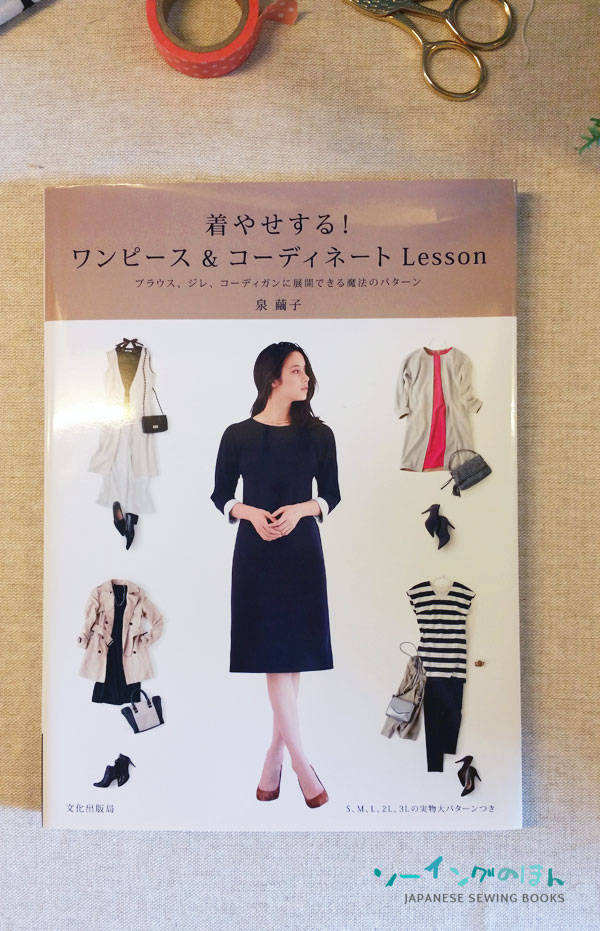
I hope I got the title right though, because of the way the hiragana is written. Google translate gives me two different answers for the first line – “Clothes to wear or Clothes that make you lose weight!”. I think the second option is more likely, since it ends with an exclamation mark, and the sizes included in the book are from S all the way to 3L. So I shall assume that the patterns are designed to help us look slim.
I’m sorry about the yellowish color in the photos. I tried my best to adjust the color without affecting the original garment photos too much, but as I could only take the photos at night and the lighting was really bad, this will have to do for now. I need to find a way to take photos in the day without my 2 yr old trampling over my books 🙁
A quick glance at the contents shows that there are 4 basic patterns for dresses/tops. Using this 4 basic patterns, there are at least 4 variations per pattern.

There is also a Gaucho pants pattern E which is shown on some of the pages.
Let’s look at pattern A for example to see what kind of variations there are for each basic pattern.
A1 is a basic dolman sleeve dress. Simple, classy, dress-up or dress down, anytime dress don’t you think?
A2 is a tunic length, V-shape neckline, and it suddenly looks like a totally different outfit but it is actually made from the same basic pattern as A.
A3 is a blouse with frill sleeves.

A7 looks even more different from A1 with cap sleeves and an additional waist sash.
Each pattern starts with a basic description with the design points. Garment B’s special design feature is the pleat at the shoulder seam.
B3 is B transformed to a dress with a waist belt, with long sleeves and contrast piping detail along the cuffs and belt.

C is a waist yoke dress in color block dress
D2 is a sleeveless dress with slanted darts.
Use the same pattern for a Gilet (a light sleeveless padded jacket)

Wait, is it the same pattern? Yup, same pattern transformed into a bolero style jacket.
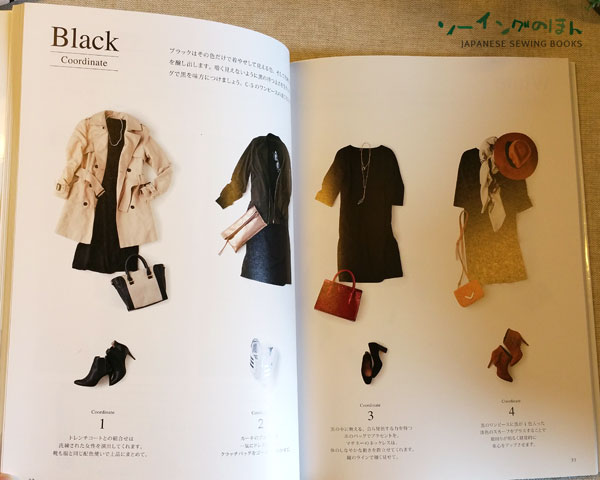
There is a whole section devoted to coordinating the garments for different looks.
There are 2 detailed lessons for A-1 Dolman sleeve dress and B-1 Shoulder tuck blouse.
The sizing table is as follows :
The above is based on your body measurements and not completed garment size.
An example of a typical how-to-make page. Note that there is an extra table on the top right hand corner. This is for the completed garment dimensions.
2 sheets of double sided printed patterns.
and here’s the book flip through video.
Buy yours now at cdJapan (affiliate link)
Title : Clothes that make you look slim! Dresses & Coordinates Lesson
Author : Izumi Koko
ISBN : 978-4579115853


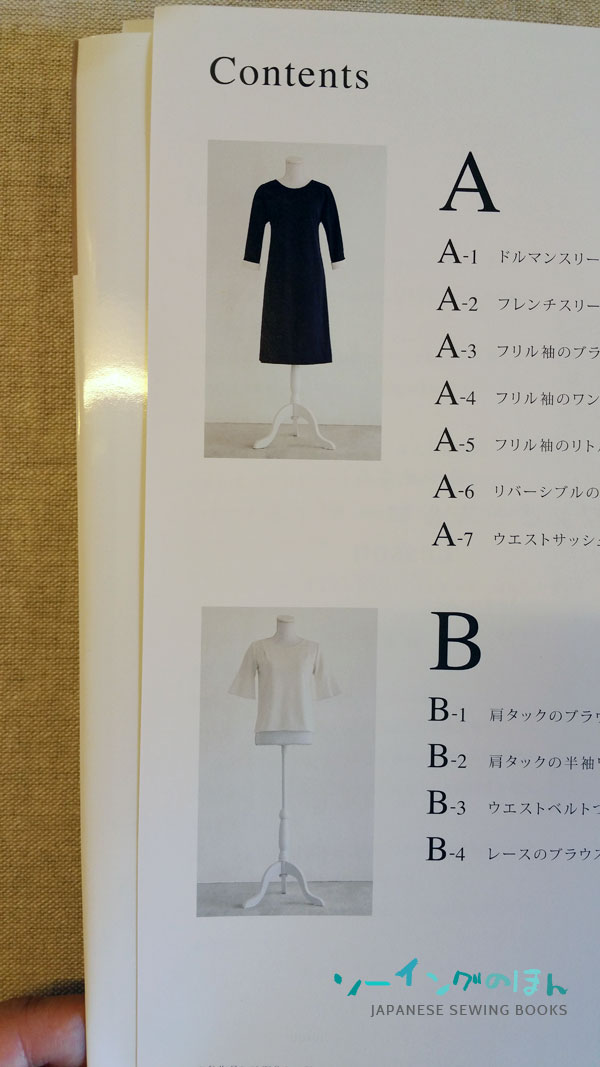
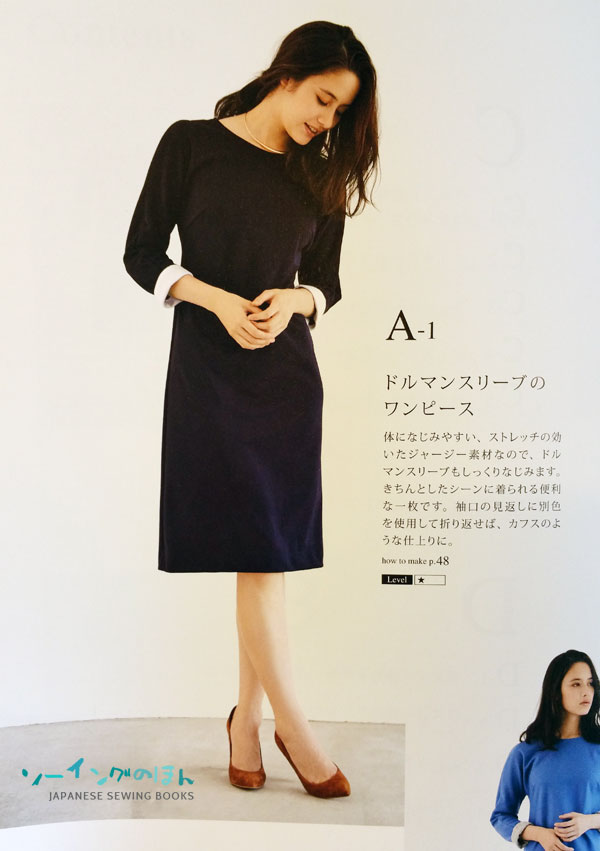



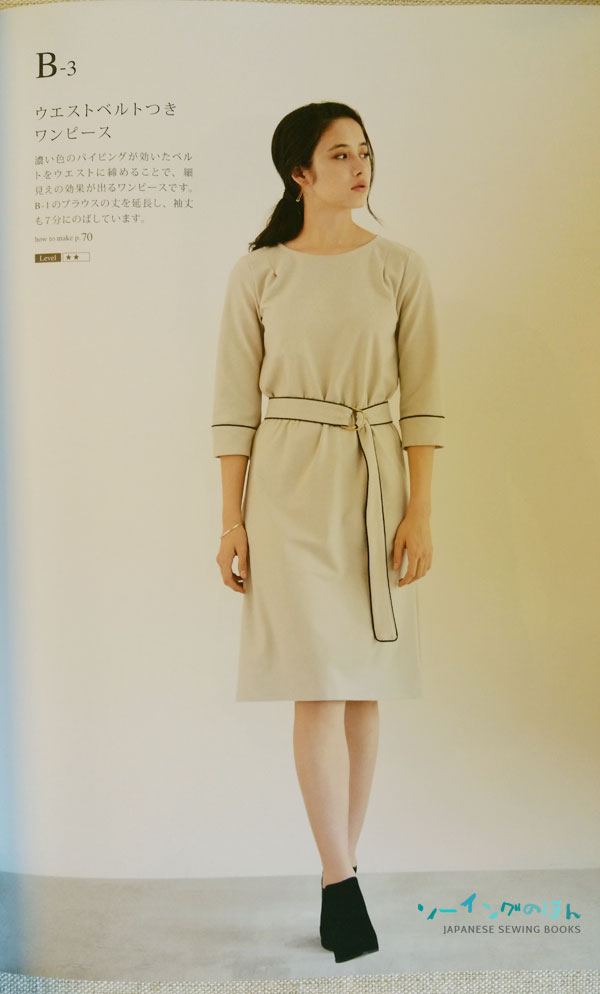
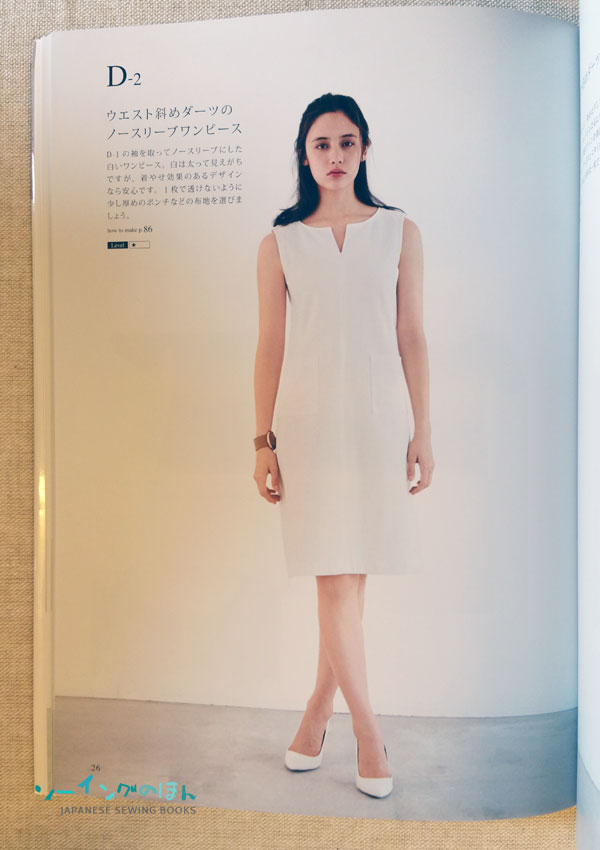
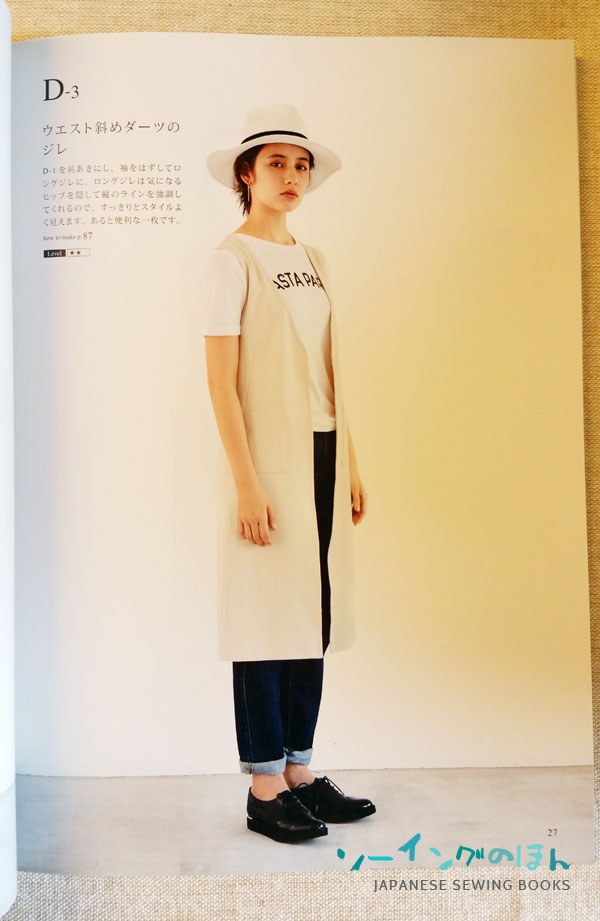

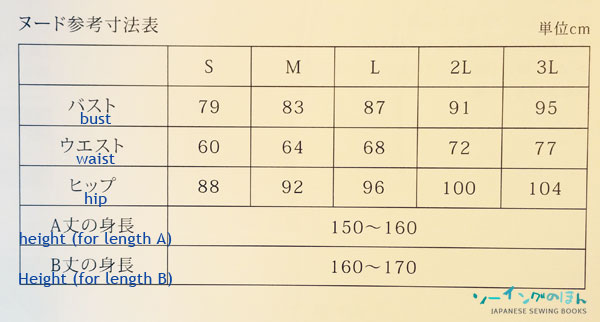





4 Comments
I really like these patterns. Am I reading the sizes correctly? This book seems to have larger sizes then a typical Japanese sewing book.
[…] Remember the book review I wrote a couple of weeks ago? I made one of the tops and wanted to show you the results. […]
Are all the patterns in this book made for knit fabrics? I bought the book, but since I can’read Japanese, I don’t know what fabric to use for each model
If you see the term ニット that means knit fabrics. You can check my dictionary as well for the other terms and if you still can’t find it you can ask here!